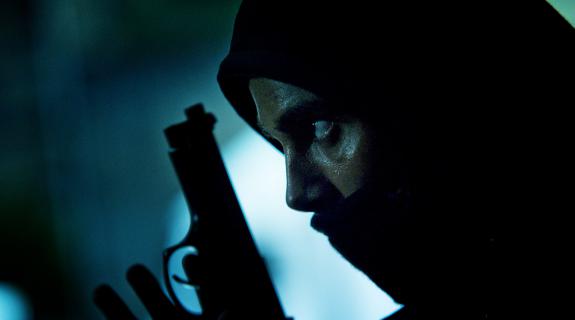When Italy’s all-time biggest TV export Gomorrah premiered on SundanceTV August 24, it was the first chance for American audiences to see what Ricky Gervais described as the “TV show of the decade.”
The gritty drama from Sky Italia centers around the fictional Savastano crime family, taking cues from the sociopolitical ramifications of the real-life Camorra family (also known as the Neopolitan Mafia).
Gomorrah is based on a bestselling nonfiction novel of the same name by Roberto Saviano, which was previously adapted in 2008 as a Cannes’ Grand Prix winning film. That’s where Stefano Sollima, supervising director and showrunner for the series, came in.
I caught the Italian director in the middle of family time in Los Angeles, taking a break from pre-production on Soldado, the follow up to Sicario, starring Benicio del Toro.
Gomorrah is the most popular Italian series of all time. Why do you think it’s become such a huge hit?
We have a good balance between a TV show and a realistic portrait of a world. It’s a different world from yours to discover that uses the universal, common code of the gangster movie.
.jpg)
What gangster movies influenced you?
As a director you are influenced by an incredible amount of different kinds of movies. I get inspiration from the Italian noir, from the French, and from USA gangster movies, which have a great tradition. An example of a direct influence was The Wire because of how realistically they portray the subject matter.
Like The Wire, this is a dark and gritty drama. How different is Gomorrah from the rest of Italian TV?
It completely stands out because it’s so real. This was a challenging project from the beginning because when I first pitched my vision to Sky, I told them I wanted to make a documentary, but actually shot as a super cool movie.
So we shot in a real place: Scampia. When we started to shoot the first season, Scampia was a war zone. There was a war between different clans. Clan is like a cartel; criminal organizations based in the same neighborhood. It was really exciting for the audience to know that what we shot was absolutely the truth, and shot in a real place. You have a natural documentaristic approach, but by shooting much more than a documentary, it becomes a show, and is one of the reasons it’s so different.
Another approach we had was to keep the dialects in the dialogue. So the TV show was subtitled in Italy too.
Oh wow.
Yes! This was of course a great risk for a show. It was something that no one did before. It was original, because it was absolutely realistic and then we put a family into the center of our story. A family is one of the more universal things we have. If you feel really far from the world of Gomorrah, you understand how a family works.

I read that you spent two years shooting this project. And you were in a war zone? How hard was that? How dangerous?
In the beginning I was scared but not because it was dangerous but because it was a strange atmosphere. It was strange for me to be in a real place where people get shot and get killed while we were shooting for fake the same thing. I don’t think it was really dangerous because we were outside from the war, but it was difficult as a huge production.
For example, one day we found a huge, great place to shoot a sequence where they arrive and kill some other people, a shooting. Two days before our scene, the Camorra killed a guy exactly in the same place we chose to shoot the movie. So of course we changed our location because it was impossible to go there, and absolutely absurd to shoot a scene of a TV show in a place where two days before a 14-year-old was killed by the Camorra.
We were witness to the reality at the same time we were creating a story based on reality. This was strange more than dangerous.
How did you work with the other directors to make one cohesive vision across the first 12 episodes?
Gomorrah was slightly different from how you drive a TV show in the United States, or even in the UK or in France. Because it’s my vision. I was the showrunner. I was on the script from the beginning. We did the treatment, we did the screenplay, I was the supervisor for the writing.
After reading the book of Roberto Saviano, my idea was to tell each episode from a specific point of view of one of our characters. From this I started to imagine the first season as a collective piece, where you have a different writer and different director and can feel the difference. I let the director really put their own point of view on the story they were telling. It was a way to respect the complexity of the book.

What do you hope Americans draw from the show? Or do you think it matters if you’re Italian or American or anyone watching the show?
Normally as a director I don’t have a lot of expectation. I felt the same when we came out in Italy two years ago. Gomorrah is a gritty show based on reality. It’s a reality that is more similar to you than you probably expect. This gives universal appeal to Gomorrah. It’s exotic but familiar.
America gots familiar with Gomorrah on August 24 at 10/9c when the Sky original series made its U.S. debut on SundanceTV.
[Images courtesy of Sky]
Tags:













































__twocolumncontent.jpg)











